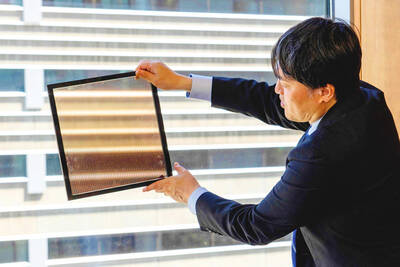Share prices closed up 1.32 percent yesterday on anticipation of more investment from China amid rapidly improving ties, dealers said. The weighted TAIEX rose 89.64 points to 6,856.74 on turnover of NT$94.34 billion (US$2.95 billion).
The index fell 0.5 percent for the week. The local stock market opened yesterday to compensate for a holiday last week. In yesterday’s session, gainers led losers by 1,423 to 607 with 157 stocks unchanged.
“There were continued fund flows into the stock market as investors expect more Chinese investments to soon arrive,” Henry Miao (苗台生) of Hua Nan Securities (華南證券) said.
Property developer We & Win Development was limit-up 7 percent to NT$9.18 and Farglory Group rose 6.86 percent to NT$84.2.
United Microelectronics Corp (UMC, 聯電) added 5.73 percent to NT$13.85, the most since May 6, after the world’s second-biggest maker of custom semiconductors sold its final stake in chip designer Mediatek Inc (聯發科).
In a stock exchange filing on Friday, UMC said it sold 871,763 Mediatek shares, a stake of 0.08 percent, between May 21 and Friday, profiting NT$348 million from the transaction. Rival Taiwan Semiconductor Manufacturing Co (台積電) climbed 0.53 percent to NT$57.70.
On the Taipei Forex Inc, the NT dollar lost against the US dollar yesterday, declining NT$0.113 to close at NT$32.72. Turnover was US$328 million.

UNCERTAINTIES: Exports surged 34.1% and private investment grew 7.03% to outpace expectations in the first half, although US tariffs could stall momentum The Chung-Hua Institution for Economic Research (CIER, 中華經濟研究院) yesterday raised its GDP growth forecast to 3.05 percent this year on a robust first-half performance, but warned that US tariff threats and external uncertainty could stall momentum in the second half of the year. “The first half proved exceptionally strong, allowing room for optimism,” CIER president Lien Hsien-ming (連賢明) said. “But the growth momentum may slow moving forward due to US tariffs.” The tariff threat poses definite downside risks, although the scale of the impact remains unclear given the unpredictability of US President Donald Trump’s policies, Lien said. Despite the headwinds, Taiwan is likely

When Lika Megreladze was a child, life in her native western Georgian region of Guria revolved around tea. Her mother worked for decades as a scientist at the Soviet Union’s Institute of Tea and Subtropical Crops in the village of Anaseuli, Georgia, perfecting cultivation methods for a Georgian tea industry that supplied the bulk of the vast communist state’s brews. “When I was a child, this was only my mum’s workplace. Only later I realized that it was something big,” she said. Now, the institute lies abandoned. Yellowed papers are strewn around its decaying corridors, and a statue of Soviet founder Vladimir Lenin

UNIFYING OPPOSITION: Numerous companies have registered complaints over the potential levies, bringing together rival automakers in voicing their reservations US President Donald Trump is readying plans for industry-specific tariffs to kick in alongside his country-by-country duties in two weeks, ramping up his push to reshape the US’ standing in the global trading system by penalizing purchases from abroad. Administration officials could release details of Trump’s planned 50 percent duty on copper in the days before they are set to take effect on Friday next week, a person familiar with the matter said. That is the same date Trump’s “reciprocal” levies on products from more than 100 nations are slated to begin. Trump on Tuesday said that he is likely to impose tariffs

Japan is heavily investing in a new kind of ultra-thin, flexible solar panel that it hopes will help it meet renewable energy goals while challenging China’s dominance of the sector. Pliable perovskite panels are perfect for mountainous Japan, with its shortage of flat plots for traditional solar farms. A key component of the panels is iodine, something Japan produces more of than any country but Chile. The push faces some obstacles: Perovskite panels contain toxic lead, and, for now, produce less power and have shorter lifespans than their silicon counterparts. Still, with a goal of net zero by 2050 and a desire to